Analizing Teens an Analysis from the Perspective of Gamers in Youtube
Abstract
:1. Introduction
2. Materials and Methods
2.1. Research Model and Procedure and Data Analysis
2.2. Research Context and Sample
2.3. Instrument Used and Their Validation
3. Results
3.1. KPI Analysis
3.2. Sentiment Analysis
3.3. Semantic Analysis
4. Discussion
5. Conclusions
Author Contributions
Funding
Institutional Review Board Statement
Informed Consent Statement
Data Availability Statement
Acknowledgments
Conflicts of Interest
Appendix A
| YouTube Profile | Gender of Influencer | Country | Language | Description Channel |
|---|---|---|---|---|
| PewDiePie | Male | EEUU | English | Let′s Play Videos |
| Fernanfloo | Male | El Salvador | Spanish | Live Stream Video |
| VEGETTA777 | Male | Spain | Spanish | Game Reviews |
| Markiplier | Male | EEUU | English | Let’s Play Videos |
| VanossGaming | Male | Canada | English | Let’s Play Videos |
| jacksepticeye | Male | Ireland | English | Gaming Walkthrough |
| Ninja | Male | EEUU | English | Live Stream Video |
| TheDiamondMinecart//DanTDM | Male | United Kingdom | English | Let’s Play Videos |
| Talking Tom | Male | EEUU | English | Let’s Play Videos |
| AuthenticGames | Male | Brasil | Portuguese | Gaming Tutorials |
| Jelly | Male | United Kingdom | English | Live Stream Video |
| TheDonato | Male | Argentina | Spanish | Let’s Play Videos |
| TheWillyrex | Male | Spain | Spanish | Let’s Play Videos |
| Jess No Limit | Male | Indonesia | English | Gaming Tutorials |
| Mikecrack | Male | Spain | Spanish | Let’s Play Videos |
| Ali-A | Male | United Kingdom | English | Gaming Walkthrough |
| PopularMMOs | Male | EEUU | English | Let’s Play Videos |
| LazarBeam | Male | Australia | English | Let’s Play Videos |
| Clash of Clans | Male | EEUU | English | Let’s Play Videos |
| W2S | Male | United Kingdom | English | Live Stream Video |
| SSundee | Male | EEUU | English | Let’s Play Videos |
| TheGrefg | Male | Spain | Spanish | Live Stream Videos |
| IGN | Male | EEUU | English | Preview an Upcoming Game |
| Mr. Marmok | Male | Russia | Russian | Gaming Walkthrough |
| Lachlan | Male | Australia | English | Live Stream Videos |
| Antrax | Male | Mexico | Spanish | Live Stream Videos |
| Frost Diamond | Male | Indonesia | English | Let’s Play Videos |
| Kwebbelkop | Male | EEUU | English | Let’s Play Videos |
| The Game Theorists | Male | EEUU | English | Secrets of the game |
| League of Legends | Male | EEUU | English | Let’s Play Videos |
| Robin Hood Gamer | Male | Brasil | Portuguese | Let’s Play Videos |
| H2ODelirious | Male | EEUU | English | Gaming Walkthrough |
| iTownGamePlay ✮Terror&Diversión✮ | Male | Spain | Spanish | Let’s Play Videos |
| RobleisIUTU | Male | Argentina | Spanish | Live Stream Videos |
| PlayHard | Male | Brasil | Portuguese | Gaming Tutorials |
| TazerCraft | Male | Brasil | Portuguese | Let’s Play Videos |
| Tfue | Male | EEUU | English | Live Sream Videos |
| Vete a la Versh | Male | Mexico | Spanish | Let’s Play Videos |
| zbing z. | Female | Thailand | English | Let’s Play Videos |
| theRadBrad | Male | EEUU | English | Gaming Walkthrough |
| MiawAug | Male | Indonesia | English | Gaming Walkthrough |
| Sky Does Minecraft | Male | EEUU | English | Let’s Play Videos |
| Total Gaming | Male | India | English | Live Stream Videos |
| Dyland PROS | Male | Indonesia | English | Let’s Play Videos |
| CaptainSparklez | Male | EEUU | English | Let’s Play Videos |
| DaniRep|+6 Vídeos Diarios De GTA 5 Online! | Male | Spain | Spanish | Live Stream Videos |
| BCC Trolling | Male | United Kingdom | English | Live Stream Videos |
| ElTrollino | Male | Spain | Spanish | Let’s Play Videos |
| Jazzghost | Male | Brasil | Portuguese | Let’s Play Videos |
| Typical Gamer | Male | Canada | English | Gaming Walkthrough |
| Piuzinho | Male | Brasil | Portuguese | Live Stream Videos |
| NOBRU | Male | Brasil | Portuguese | Let’s Play Videos |
| TheSyndicateProject | Male | United Kingdom | English | Gaming Walkthrough |
| stampylonghead | Male | United Kingdom | English | Gaming Walkthrough |
| LipaoGamer | Male | Brasil | Portuguese | Let’s Play Videos |
| Muselk | Male | Australia | English | Live Stream Videos |
| Kuplinov ► Play | Male | Russia | Russian | Live Stream Video Games |
| Пoззи | Male | Russia | Russian | Let’s Play videos Games |
| JP Plays | Male | Brasil | Portuguese | Let’s Play videos Games |
| LOUD | Male | EE.UU | English | Let’s Play videos Games |
| Denis-Roblox & More! | Male | EE.UU | English | Let’s Play videos Games |
| Hueva | Male | Mexico | Spanish | Live Stream Video Games |
| aLexBY11 | Male | Spain | Spanish | Live Stream Video Games |
| Slogo | Male | United Kingdom | English | Let’s Play videos Games |
| BRKsEDU | Male | Brasil | Portuguese | Let’s Play videos Games |
| Аид [VyacheslavOO] | Male | Russia | Russian | Let’s Play videos Games |
| Yair17 | Male | Mexico | Spanish | Let’s Play videos Games |
| Dynamo Gaming | Male | India | English | Let’s Play videos Games |
| TheBrainDit | Male | Ukraine | Ukrainian | Let’s Play videos Games |
| Games EduUu | Male | Brasil | Portuguese | Let’s Play videos Games |
| elrubius | Male | Spain | Spanish | Live Stream Video Games |
| FaZe Clan | Male | EE.UU | English | Let’s Play videos Games |
| Unspeakable | Male | EE.UU | English | Live Stream Video Games |
| UDiEX2 | Male | Thailand | Thai | Live Stream Video Games |
| FrontaL Gaming | Male | indonesia | English | Live Stream Video Games |
| Rodrigo F Gamer Respeita | Male | Brasil | Portuguese | Let’s Play videos Games |
| Levinho | Male | Sweden | Swedish | Let’s Play videos Games |
| /أتروAtro | Male | Saudi Arabia | Arab | Live Stream Video Games |
| sTaXxCraft | Male | Spain | Spanish | Let’s Play videos Games |
| CRACKS | Male | Spain | Spanish | Let’s Play videos Games |
| BoomSniper | Male | Mexico | Spanish | Let’s Play videos Games |
| BanderitaX | Male | Saudi Arabia | Arab | Let’s Play videos Games |
| JoshDub | Male | Australia | English | Let’s Play videos Games |
| Fe4RLess | Female | EE.UU | English | Let’s Play videos Games |
| I AM WILDCAT | Male | EE.UU | English | Live Stream Video Games |
| مصطفى GAME OVER | Male | Turkey | turkish | Let’s Play videos Games |
| Smosh Games | Male | EE.UU | English | Game Analysis |
| CGGG | Male | Thailand | Thai | Let’s Play videos Games |
| MrLololoshka (Рoман Фильченкoв) | Male | Russia | Russian | Let’s Play videos Games |
| YOGSCAST Lewis & Simon | Male | United Kingdom | English | Let’s Play videos Games |
| Coffi Channel | Male | Russia | Russian | Let’s Play videos Games |
| EdisonPts | Male | Russia | Russian | Live Stream Video Games |
| Daithi De Nogla | Male | Irland | English | Live Stream Video Games |
| MoonKase | Female | Brasil | Portuguese | Let’s Play videos Games |
| BETO GAMER | Male | Brasil | Portuguese | Let’s Play videos Games |
| Canal Clash War | Male | Brasil | Portuguese | Let’s Play videos Games |
| kemas pake z | Male | Indonesia | English | Live Stream Video Games |
| DeGoBooM | Male | Chile | Spanish | Let’s Play videos Games |
| iHasCupquake | Female | EE.UU | English | Let’s Play videos Games |
| YouTube Profile | Number of Comments (Total) a | Fans b | Number of Publications c | Number of Likes d | Sum of the Impressions of Individual Messages e |
|---|---|---|---|---|---|
| PewDiePie | 12,034,046 | 106,000,000 | 313 | 163,926,899 | 2,326,202,351 |
| Fernanfloo | 752,957 | 37,500,000 | 4 | 5,910,193 | 40,932,718 |
| VEGETTA777 | 1,647,323 | 30,700,000 | 667 | 97,453,430 | 997,268,571 |
| Markiplier | 2,917,568 | 26,600,000 | 285 | 35,456,085 | 792,006,032 |
| VanossGaming | 196,334 | 25,100,000 | 182 | 14,017,478 | 432,004,572 |
| jacksepticeye | 4,193,100 | 24,600,000 | 395 | 41,381,254 | 788,272,256 |
| Ninja | 660,423 | 24,000,000 | 254 | 11,961,429 | 306,558,138 |
| TheDiamondMinecart//DanTDM | 2,982,603 | 23,600,000 | 197 | 15,043,432 | 563,737,951 |
| Talking Tom | 20,412 | 20,400,000 | 37 | 5,182,713 | 1,323,594,769 |
| AuthenticGames | 1,059,443 | 19,300,000 | 333 | 18,652,417 | 281,341,564 |
| Jelly | 2,541,435 | 19,000,000 | 699 | 115,652,114 | 1,918,231,945 |
| TheDonato | 4,754,133 | 18,900,000 | 328 | 114,147,981 | 1,114,369,195 |
| TheWillyrex | 676,915 | 17,700,000 | 376 | 31,571,403 | 422,420,103 |
| Jess No Limit | 21,829,800 | 17,500,000 | 570 | 46,088,980 | 883,955,761 |
| Mikecrack | 2,411,291 | 17,400,000 | 138 | 29,737,381 | 846,339,479 |
| Ali-A | 1,084,709 | 17,200,000 | 248 | 14,763,289 | 409,162,441 |
| PopularMMOs | 1,110,049 | 17,100,000 | 135 | 4,706,184 | 156,173,234 |
| LazarBeam | 2,921,237 | 16,100,000 | 127 | 39,976,290 | 1,309,433,268 |
| Clash of Clans | 149,864 | 15,700,000 | 64 | 3,675,023 | 326,604,955 |
| W2S | 75,589 | 15,400,000 | 9 | 1,893,082 | 50,531,104 |
| SSundee | 3,819,036 | 14,600,000 | 321 | 71,537,986 | 1,070,835,104 |
| TheGrefg | 3,418,441 | 14,600,000 | 271 | 72,950,917 | 923,059,872 |
| IGN | 3,160,339 | 13,900,000 | 4625 | 23,074,786 | 995,606,769 |
| Mr. Marmok | 1,243,972 | 13,800,000 | 33 | 19,593,877 | 245,807,086 |
| Lachlan | 794,288 | 13,700,000 | 157 | 13,772,185 | 558,834,945 |
| Antrax | 1,305,993 | 13,400,000 | 75 | 18,021,754 | 250,400,504 |
| Frost Diamond | 9,519,299 | 13,400,000 | 413 | 46,201,797 | 802,789,236 |
| Kwebbelkop | 438,449 | 13,400,000 | 352 | 19,812,635 | 687,749,179 |
| The Game Theorists | 1,256,316 | 13,000,000 | 73 | 10,015,294 | 231,114,925 |
| League of Legends | 685,955 | 12,600,000 | 109 | 12,330,025 | 516,903,207 |
| Robin Hood Gamer | 1,339,743 | 12,600,000 | 475 | 59,633,254 | 853,764,104 |
| H2ODelirious | 652,499 | 12,500,000 | 337 | 13,703,823 | 279,414,625 |
| iTownGamePlay ✮Terror&Diversión✮ | 780,326 | 12,500,000 | 596 | 6,796,971 | 97,734,140 |
| RobleisIUTU | 2,284,084 | 12,400,000 | 292 | 38,234,922 | 512,024,360 |
| PlayHard | 875,272 | 12,200,000 | 286 | 36,169,691 | 305,098,805 |
| TazerCraft | 378,164 | 12,100,000 | 198 | 10,827,996 | 145,934,305 |
| Tfue | 304,257 | 12,000,000 | 97 | 6,872,164 | 170,587,819 |
| Vete a la Versh | 80,193 | 11,900,000 | 28 | 3,060,509 | 45,111,876 |
| zbing z. | 791,845 | 11,900,000 | 366 | 13,695,613 | 625,001,678 |
| theRadBrad | 793,946 | 11,800,000 | 521 | 9,974,510 | 293,265,167 |
| MiawAug | 4,248,846 | 11,400,000 | 423 | 26,085,893 | 769,930,306 |
| Sky Does Minecraft | 111,734 | 11,400,000 | 203 | 1,071,615 | 12,795,664 |
| Total Gaming | 2,573,235 | 11,200,000 | 713 | 91,165,996 | 1,156,491,047 |
| Dyland PROS | 5,463,883 | 10,900,000 | 406 | 17,260,663 | 316,178,164 |
| CaptainSparklez | 335,183 | 10,800,000 | 320 | 4,202,096 | 103,174,162 |
| DaniRep|+6 Vídeos Diarios De GTA 5 Online! | 691,338 | 10,600,000 | 636 | 19,390,712 | 431,549,582 |
| BCC Trolling | 437,524 | 10,500,000 | 373 | 9,481,413 | 364,709,704 |
| ElTrollino | 564,603 | 10,200,000 | 65 | 13,667,484 | 551,701,559 |
| Jazzghost | 2,820,931 | 10,200,000 | 631 | 42,332,135 | 470,739,796 |
| Typical Gamer | 234,974 | 9,910,000 | 414 | 7,399,989 | 364,029,865 |
| Piuzinho | 1,323,554 | 9,870,000 | 80 | 30,047,725 | 153,661,518 |
| NOBRU | 676,469 | 9,840,000 | 295 | 93,901,888 | 517,102,425 |
| TheSyndicateProject | 83,505 | 9,770,000 | 130 | 1,131,839 | 30,788,584 |
| stampylonghead | 232,990 | 9,580,000 | 192 | 1,250,025 | 40,696,418 |
| LipaoGamer | 795,995 | 9,480,000 | 1171 | 29,035,335 | 349,073,188 |
| Muselk | 978,803 | 9,360,000 | 249 | 14,428,208 | 460,542,677 |
| Kuplinov ► Play | 1,475,181 | 9,150,000 | 553 | 26,141,479 | 414,847,752 |
| Пoззи | 3,048,233 | 9,080,000 | 674 | 37,150,340 | 707,215,939 |
| JP Plays | 827,188 | 9,040,000 | 519 | 28,803,442 | 431,843,285 |
| LOUD | 3,743,364 | 9,010,000 | 370 | 148,715,306 | 1,041,223,364 |
| Denis—Roblox & More! | 1,321,871 | 8,770,000 | 320 | 6,511,320 | 291,863,488 |
| Hueva | 555,262 | 8,710,000 | 165 | 17,542,253 | 342,766,579 |
| aLexBY11 | 333,076 | 8,610,000 | 235 | 12,204,058 | 105,569,748 |
| Slogo | 1,766,567 | 8,590,000 | 734 | 88,388,909 | 1,286,072,065 |
| BRKsEDU | 335,698 | 8,560,000 | 426 | 10,249,397 | 101,967,294 |
| Аид [VyacheslavOO] | 2,832,833 | 8,530,000 | 445 | 39,845,318 | 592,223,812 |
| Yair17 | 1,862,427 | 8,350,000 | 171 | 47,146,001 | 345,798,627 |
| Dynamo Gaming | 269,460 | 8,330,000 | 317 | 30,721,269 | 341,615,666 |
| TheBrainDit | 132,285 | 8,330,000 | 567 | 2,694,914 | 44,092,622 |
| Games EduUu | 1,047,474 | 8,300,000 | 75 | 20,625,081 | 186,404,936 |
| elrubius | 1,717,383 | 8,260,000 | 157 | 51,355,921 | 608,099,694 |
| FaZe Clan | 335,169 | 8,230,000 | 84 | 5,232,440 | 160,424,585 |
| Unspeakable | 2,200,326 | 8,080,000 | 140 | 26,188,531 | 1,068,316,293 |
| UDiEX2 | 831,378 | 8,050,000 | 259 | 17,466,081 | 358,366,168 |
| FrontaL Gaming | 845,313 | 8,000,000 | 149 | 13,462,363 | 338,815,543 |
| Rodrigo F Gamer Respeita | 590,935 | 7,990,000 | 65 | 20,393,228 | 120,608,185 |
| Levinho | 1,738,040 | 7,900,000 | 426 | 41,955,083 | 785,640,540 |
| Atro/أترو | 8,503,731 | 7,800,000 | 412 | 92,912,040 | 844,352,826 |
| sTaXxCraft | 108,447 | 7,790,000 | 93 | 4,096,013 | 42,479,035 |
| CRACKS | 1,034,627 | 7,710,000 | 136 | 20,053,140 | 299,312,298 |
| BoomSniper | 316,036 | 7,680,000 | 89 | 11,971,070 | 203,567,553 |
| BanderitaX | 1,958,206 | 7,640,000 | 201 | 42,709,594 | 438,281,775 |
| JoshDub | 671,786 | 7,600,000 | 70 | 16,357,649 | 527,984,685 |
| Fe4RLess | 400,067 | 7,590,000 | 2 | 2,027,461 | 56,042,889 |
| I AM WILDCAT | 277,968 | 7,510,000 | 324 | 9,704,065 | 310,834,044 |
| GAME OVER مصطفى | 1,228,132 | 7,510,000 | 89 | 17,666,936 | 183,044,904 |
| Smosh Games | 99,121 | 7,430,000 | 92 | 1,697,993 | 41,208,716 |
| CGGG | 346,029 | 7,330,000 | 252 | 11,125,872 | 231,189,496 |
| MrLololoshka (Рoман Фильченкoв) | 1,658,327 | 7,240,000 | 496 | 27,303,590 | 290,652,894 |
| YOGSCAST Lewis & Simon | 189,011 | 7,200,000 | 312 | 3,855,665 | 89,761,221 |
| Coffi Channel | 1,170,609 | 7,190,000 | 732 | 25,398,197 | 337,203,373 |
| EdisonPts | 3,980,809 | 7,190,000 | 368 | 39,847,448 | 814,252,289 |
| Daithi De Nogla | 248,926 | 7,070,000 | 308 | 6,110,740 | 133,410,463 |
| MoonKase | 1,057,066 | 7,040,000 | 811 | 29,981,015 | 368,686,906 |
| BETO GAMER | 313,547 | 7,030,000 | 436 | 19,643,384 | 312,804,676 |
| Canal Clash War | 2,192,117 | 6,940,000 | 358 | 36,374,881 | 223,099,286 |
| kemas pake z | 783,246 | 6,930,000 | 286 | 6,724,187 | 153,045,168 |
| DeGoBooM | 792,026 | 6,840,000 | 371 | 13,263,460 | 273,500,157 |
| iHasCupquake | 163,633 | 6,770,000 | 275 | 1,380,019 | 35,101,269 |
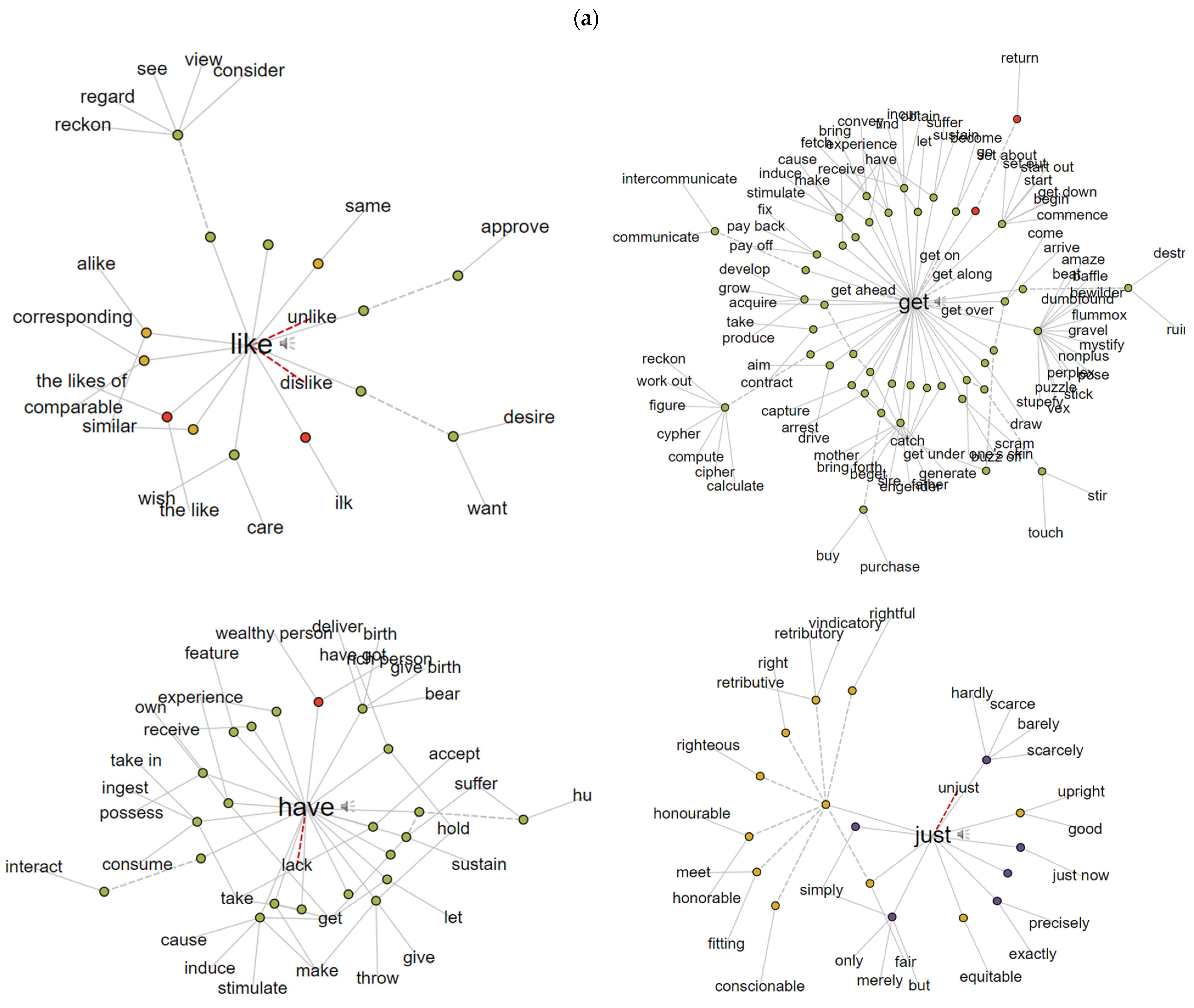
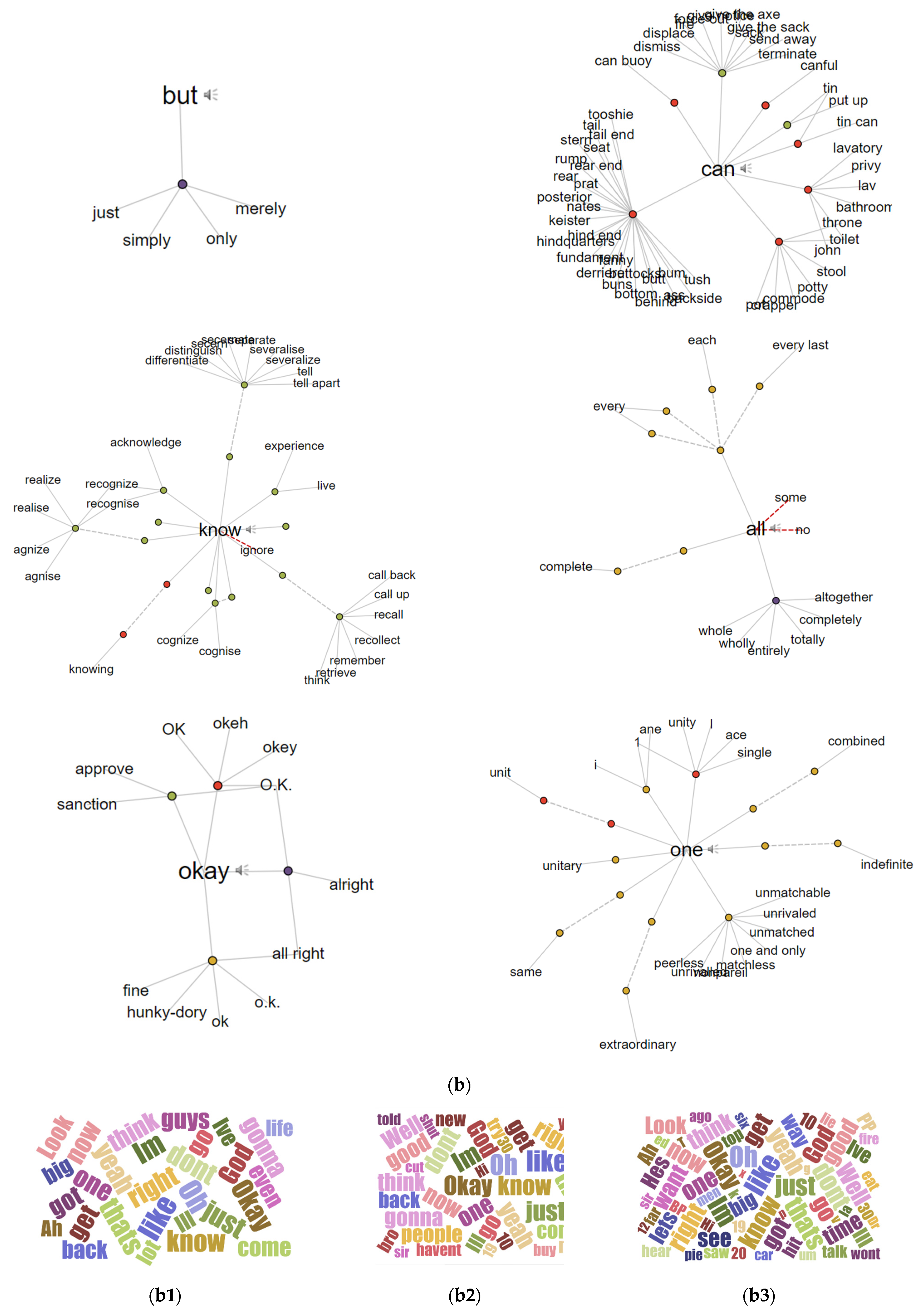
References
- Barthorpe, A.; Winstone, L.; Mars, B.; Moran, P. Is social media screen time really associated with poor adolescent mental health? A time use diary study. J. Affect. Disord. 2020, 274, 864–870. [Google Scholar] [CrossRef] [PubMed]
- Gentina, E.; Tang, T.L.-P.; Dancoine, P.-F. Does Gen Z’s emotional intelligence promote iCheating (cheating with iPhone) yet curb iCheating through reduced nomophobia? Comput. Educ. 2018, 126, 231–247. [Google Scholar] [CrossRef]
- Lozano-Blasco, R.; Cortés-Pascual, A. Problematic internet uses and depression in adolescents: A meta-analysis. Comunicar 2020, 28, 109–120. [Google Scholar] [CrossRef]
- Martín, J.G.; García-Sánchez, J.-N. Pre-service teachers’ perceptions of the competence dimensions of digital literacy and of psychological and educational measures. Comput. Educ. 2017, 107, 54–67. [Google Scholar] [CrossRef]
- Giedd, J.N. The digital revolution and adolescent brain evolution. J. Adolesc. Health 2012, 51, 101–105. [Google Scholar] [CrossRef] [Green Version]
- Paulus, M.P.; Squeglia, L.M.; Bagot, K.; Jacobus, J.; Kuplicki, R.; Breslin, F.J.; Bodurka, J.; Morris, A.S.; Thompson, W.K.; Bartsch, H.; et al. Screen media activity and brain structure in youth: Evidence for diverse structural correlation networks from the ABCD study. NeuroImage 2019, 185, 140–153. [Google Scholar] [CrossRef] [PubMed]
- Shoumy, N.J.; Ang, L.-M.; Seng, K.P.; Rahaman, D.; Zia, T. Multimodal big data affective analytics: A comprehensive survey using text, audio, visual and physiological signals. J. Netw. Comput. Appl. 2020, 149, 102447. [Google Scholar] [CrossRef]
- Alloway, T.P.; Alloway, R.G. Working memory across the lifespan: A cross-sectional approach. J. Cogn. Psychol. 2013, 25, 84–93. [Google Scholar] [CrossRef]
- Chang, L.-C.; Guo, J.L.; Lin, H.-L. Cultural competence education for health professionals from pre-graduation to licensure delivered using facebook: Twelve-month follow-up on a randomized control trial. Nurse Educ. Today 2017, 59, 94–100. [Google Scholar] [CrossRef] [PubMed]
- Rap, S.; Blonder, R. Thou shall not try to speak in the Facebook language: Students’ perspectives regarding using Facebook for chemistry learning. Comput. Educ. 2017, 114, 69–78. [Google Scholar] [CrossRef]
- Tang, Y.; Hew, K.F. Using Twitter for education: Beneficial or simply a waste of time? Comput. Educ. 2017, 106, 97–118. [Google Scholar] [CrossRef]
- Mander, J. Daily Time Spent on Social Networks Rises to over 2 Hours. Global Web Index, 2017. Available online: https://blog.globalwebindex.com/chart-of-the-day/daily-time-spent-on-social-networks/#:~:text=Social%20media%20usage%20is%20increasing%20every%20year.&text=What’s%20strikingly%20clear%20from%20our,a%20daily%20basis%20in%202016 (accessed on 10 December 2020).
- González-Patiño, J.; Esteban-Guitart, M.Y. Some of the challenges and experiences of formal education in a Mobile-Centric Society (MCS). Digit. Educ. Rev. 2014, 25, 64–86. Available online: http://greav.ub.edu/der/ (accessed on 10 August 2021).
- Lyotard, J.-F.; Bennington, G.; Massumi, B. The postmodern condition: A report on knowledge. Poet. Today 1984, 5, 886. [Google Scholar] [CrossRef] [Green Version]
- Prensky, M. Education to Better Their World: Unleashing the Power of 21st-Century Kids; Teachers College Press: Cambridge, UK, 2016. [Google Scholar]
- Buckingham, D. Beyond Technology: Children’s Learning in the Age of Digital Culture; Polity: Cambridge, UK, 2007. [Google Scholar]
- Christie, D.; Viner, R. Adolescent development. BMJ 2005, 330, 301–304. [Google Scholar] [CrossRef] [PubMed]
- Pereira, S.; Moura, P.F.R.D.; Fillol, J. The YouTubers phenomenon: What makes YouTube stars so popular for young people? Fonseca J. Commun. 2018, 17, 107–123. [Google Scholar] [CrossRef]
- Ferchaud, A.; Grzeslo, J.; Orme, S.; LaGroue, J. Parasocial attributes and YouTube personalities: Exploring content trends across the most subscribed YouTube channels. Comput. Hum. Behav. 2018, 80, 88–96. [Google Scholar] [CrossRef]
- Hartmann, T. Parasocial interaction, parasocial relationships, and well-being. In The Routledge Handbook of Media Use and Well-being: International Perspectives on Theory and Research on Positive Media Effects; Reinecke, L., Oliver, M.B., Eds.; Routledge: Cambridge, UK, 2016; pp. 131–144. [Google Scholar]
- Paaßen, B.; Morgenroth, T.; Stratemeyer, M. What is a true gamer? The male gamer stereotype and the marginalization of women in video game culture. Sex. Roles 2017, 76, 421–435. [Google Scholar] [CrossRef]
- Jerslev, A. Media times in the time of the microcelebrity: Celebrification and the YouTuber Zoella. Int. J. Commun. 2016, 10, 5233–5251. Available online: https://ijoc.org/index.php/ijoc/article/view/5078 (accessed on 25 October 2020).
- Ashman, R.; Patterson, A.; Brown, S. ‘Don’t forget to like, share and subscribe’: Digital autopreneurs in a neoliberal world. J. Bus. Res. 2018, 92, 474–483. [Google Scholar] [CrossRef]
- de Bérail, P.; Guillon, M.; Bungener, C. The relations between YouTube addiction, social anxiety and parasocial relationships with YouTubers: A moderated-mediation model based on a cognitive-behavioral framework. Comput. Hum. Behav. 2019, 99, 190–204. [Google Scholar] [CrossRef]
- Mahir, Z.E.H.; Castillo, G.P. Comunicación del liderazgo y la autoridad en redes sociales. El caso de lady Amelia Windsor en Instagram. Adres. ESIC Int. J. Commun. Res. 2020, 23, 70–89. [Google Scholar] [CrossRef]
- Genç, M.; Öksüz, B. An analysis on collaborations between Turkish beauty YouTubers and cosmetic brands. Procedia Comput. Sci. 2019, 158, 745–750. [Google Scholar] [CrossRef]
- Aran-Ramspott, S.; Fedele, M.; Tarragó, A. YouTubers’ social functions and their influence on pre-adolescence. Comunicar 2018, 26, 71–80. [Google Scholar] [CrossRef]
- Davis, K. Friendship 2.0: Adolescents’ experiences of belonging and self-disclosure online. J. Adolesc. 2012, 35, 1527–1536. [Google Scholar] [CrossRef]
- Gardner, H.; Davis, K.Y. The App Generation: How Today’s Youth Navigate Identity, Intimacy, and Imagination in a Digital World; Reprint Edición; Yale University Press: New Haven, CT, USA, 2014. [Google Scholar]
- Throuvala, M.A.; Griffiths, M.D.; Rennoldson, M.; Kuss, D.J. Motivational processes and dysfunctional mechanisms of social media use among adolescents: A qualitative focus group study. Comput. Hum. Behav. 2019, 93, 164–175. [Google Scholar] [CrossRef] [Green Version]
- Tajfel, H. Human Groups and Social Categories: Studies in Social Psychology; CUP Archive: Cambridge, UK, 1981. [Google Scholar]
- Kimmons, R. Social networking sites, literacy, and the authentic identity problem. TechTrends 2014, 58, 93–98. [Google Scholar] [CrossRef]
- Larsen, M.C. Understanding social networking: On young people’s construction and co construction of identity online. In Online Networking—Connecting People; Sangeetha, K., Ed.; Icfai University Press: Bangalore, India, 2008. [Google Scholar]
- Rodríguez Illera, J.; Martínez Olmo, F.; Rubio Hurtado, M.; Galván Fernández, C. The content posting practices of young people on social networks. Pixel-Bit. Rev. Medios Y Educ. 2021, 60, 135–151. [Google Scholar] [CrossRef]
- Clary, P.C.; Markham, M.; Myers-Bowman, K.S. Relationships are key: Family life educators’ use of social networking sites. J. Technol. Hum. Serv. 2020, 38, 112–136. [Google Scholar] [CrossRef]
- Ng, T.K.; Chu, K.W. Motivating students to learn AI through social networking sites: A case study in Hong Kong. Online Learn. 2021, 25, 195–208. [Google Scholar] [CrossRef]
- Yan, W.; Li, Y.; Sui, N. The relationship between recent stressful life events, personality traits, perceived family functioning and internet addiction among college students. Stress Health 2014, 30, 3–11. [Google Scholar] [CrossRef]
- Maranto, G.; Barton, M. Paradox and promise: MySpace, facebook, and the sociopolitics of social networking in the writing classroom. Comput. Compos. 2010, 27, 36–47. [Google Scholar] [CrossRef]
- Bauman, Z. Liquid Love: On the Frailty of Human Bonds; Blackwell Publishers: Oxford, UK, 2010. [Google Scholar]
- Fägersten, K.B. The role of swearing in creating an online persona: The case of YouTuber PewDiePie. Discourse Context Media 2017, 18, 1–10. [Google Scholar] [CrossRef]
- Bhatia, A. Interdiscursive performance in digital professions: The case of YouTube tutorials. J. Pragmat. 2018, 124, 106–120. [Google Scholar] [CrossRef]
- Burgess, J.; Green, J. YouTube e a Revolução Digital. 2009, Aleph Publicaçoes e Assessoria Pedagógica Ltd.a. Available online: Recu-pe-radohttps://edisciplinas.usp.br/pluginfile.php/2205278/mod_resource/content/1/Burgess%20et%20al.%20-%202009%20-%20YouTube%20e%20a%20Revolu%C3%A7%C3%A3o%20Digital%20Como%20o%20maior%20fen%C3%B4meno%20da%20cultura%20participativa%20transformou%20a%20m%C3%ADdia%20e%20a%20socieda.pdf (accessed on 15 December 2020).
- Lange, P.G. Kids on YouTube: Technical Identities and Digital Literacies; Left Coast Press: Jersusalem, Israel, 2014. [Google Scholar]
- Donati, P. Being Human (or What?) in the Digital Matrix Land Being Human (or What?) in the Digital Matrix Land. Post-Human Futures; Routledge: Cambridge, UK, 2021; pp. 1–25. [Google Scholar]
- The Dark Side of Social Media; Routledge: Cambridge, UK, 2017.
- Peres, R.; Talwar, S.; Alter, L.; Elhanan, M.; Friedmann, Y. Narrowband influencers and global icons: Universality and media compatibility in the communication patterns of political leaders worldwide. J. Int. Mark. 2020, 28, 48–65. [Google Scholar] [CrossRef]
- Reyes-Menendez, A.; Saura, J.R.; Alonso, C.A. Understanding #World Environment Day user opinions in Twitter: A topic-based sentiment analysis approach. Int. J. Environ. Res. Public Health 2018, 15, 2537. [Google Scholar] [CrossRef] [Green Version]
- Waterloo, S.F.; Baumgartner, S.E.; Peter, J.; Valkenburg, P.M.Y. Norms of online expressions of emtoion: Comparing Face-book, Twitter, Instagram, and Whatsapp. New Media Soc. 2018, 20, 1813–1831. [Google Scholar] [CrossRef] [Green Version]
- Saura, J.R.; Debasa, F.; Reyes-Menendez, A. Does user generated content characterize millennials’ generation behavior? Discussing the relation between SNS and open innovation. J. Open Innov. Technol. Mark. Complex. 2019, 5, 96. [Google Scholar] [CrossRef] [Green Version]
- Dewaele, J.-M. “Christ fucking shit merde!” language preferences for swearing among maximally proficient multilinguals. Socioling. Stud. 2012, 4, 595–614. [Google Scholar] [CrossRef]
- Keegan, B.J.; Rowley, J. Evaluation and decision making in social media marketing. Manag. Decis. 2017, 55, 15–31. [Google Scholar] [CrossRef]
- Hu, M.; Liu, B. Mining and summarizing customer reviews. In Proceedings of the 10th ACM SIGKDD International Conference on Knowledge Discovery and Data Mining, Seattle, DC, USA, 22–25 August 2004; pp. 168–177. [Google Scholar]
- Ceron, A.; Curini, L.; Iacus, S.M.; Porro, G. Every tweet counts? How sentiment analysis of social media can improve our knowledge of citizens’ political preferences with an application to Italy and France. New Media Soc. 2013, 16, 340–358. [Google Scholar] [CrossRef]
- Bustillos, R.O.; Cabada, R.Z.; Estrada, M.L.B.; Pérez, Y.H. Opinion mining and emotion recognition in an intelligent learning environment. Comput. Appl. Eng. Educ. 2019, 27, 90–101. [Google Scholar] [CrossRef] [Green Version]
- Yu, Y.; Duan, W.; Cao, Q. The impact of social and conventional media on firm equity value: A sentiment analysis approach. Decis. Support Syst. 2013, 55, 919–926. [Google Scholar] [CrossRef]
- Raharjana, I.K.; Siahaan, D.; Fatichah, C. User stories and natural language processing: A systematic literature review. IEEE Access 2021, 9, 53811–53826. [Google Scholar] [CrossRef]
- Maulud, D.H.; Zeebaree, S.R.M.; Jacksi, K.; Sadeeq, M.A.M.; Sharif, K.H. State of art for semantic analysis of natural language processing. Qubahan Acad. J. 2021, 1, 21–28. [Google Scholar] [CrossRef]
- Plutchik, R. The nature of emotions: Human emotions have deep evolutionary roots, a fact that may explain their complexity and provide tools for clinical practice. Am. Sci. 2001, 89, 344–350. Available online: http://www.jstor.org/stable/27857503 (accessed on 16 December 2020). [CrossRef]
- Anderson, M.; Jiang, J. Teens, Social Media & Technology 2018; Pew Research Center: Washington, DC, USA, 2018; Available online: http://publicservicesalliance.org/wp-content/uploads/2018/06/Teens-Social-Media-Technology-2018-PEW.pdf (accessed on 20 December 2020).
- Ofcom. Research and Data. 2017. Available online: https://www.ofcom.org.uk/aboutofcom/latest/media/facts (accessed on 24 October 2020).
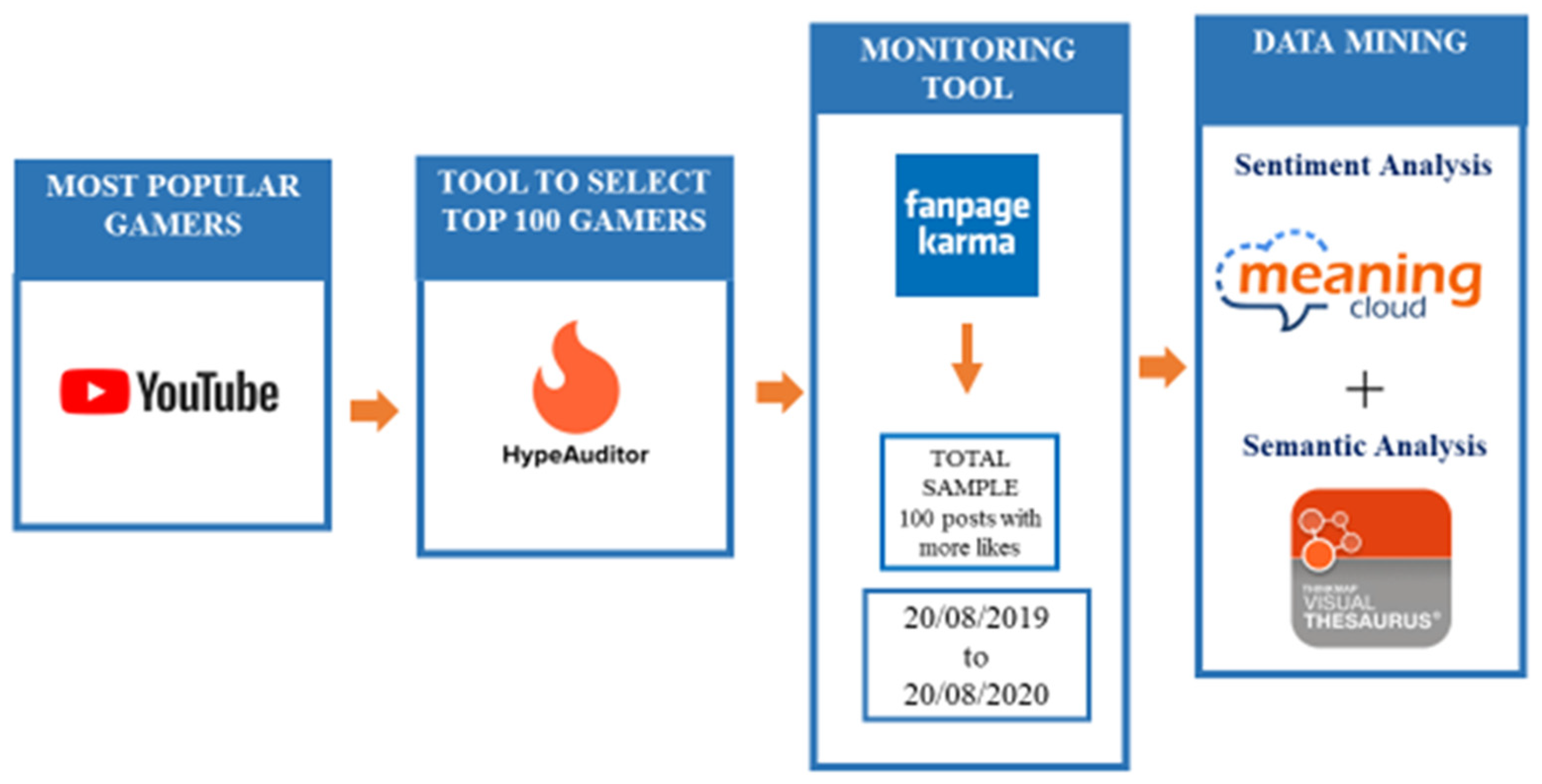
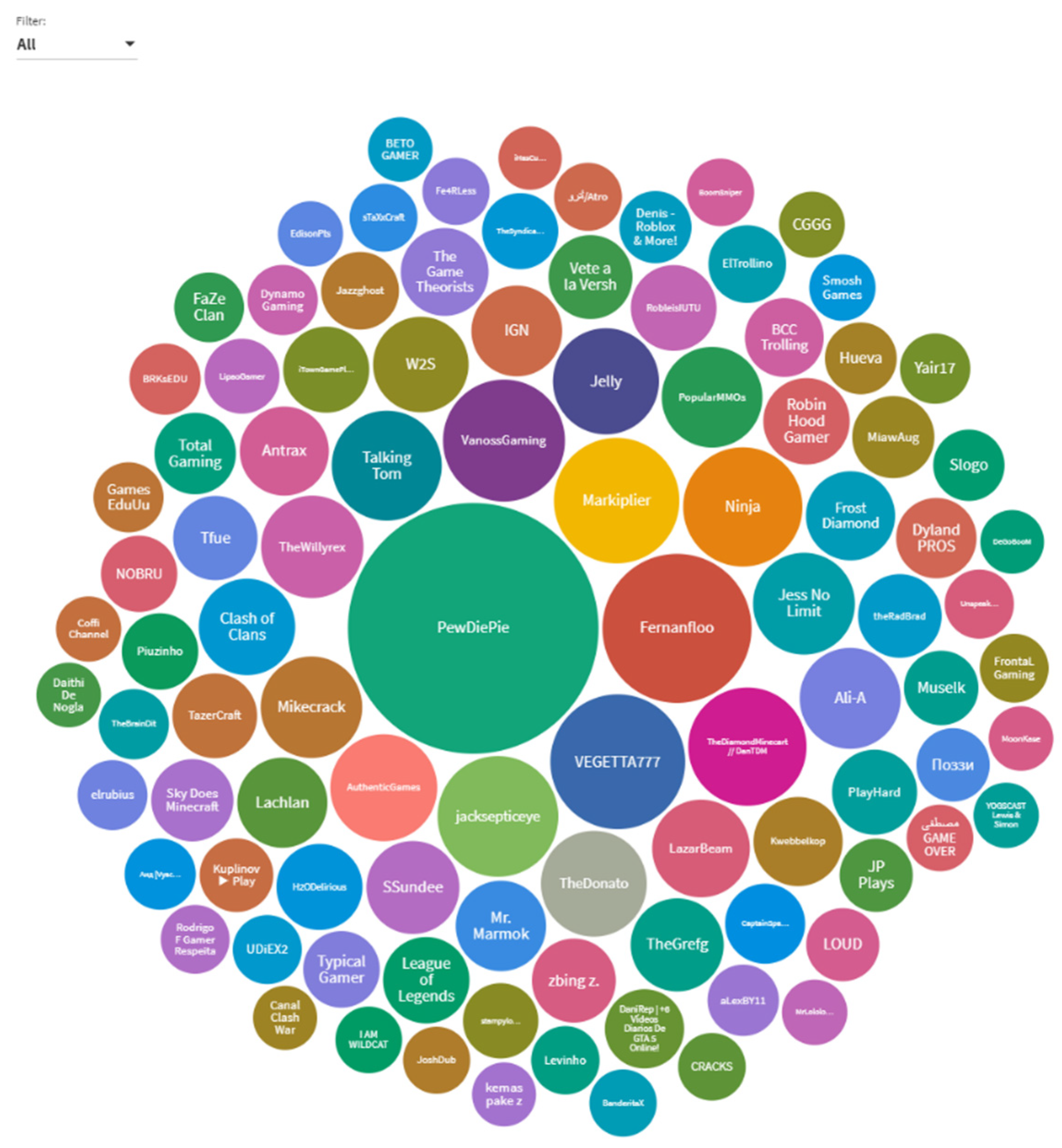
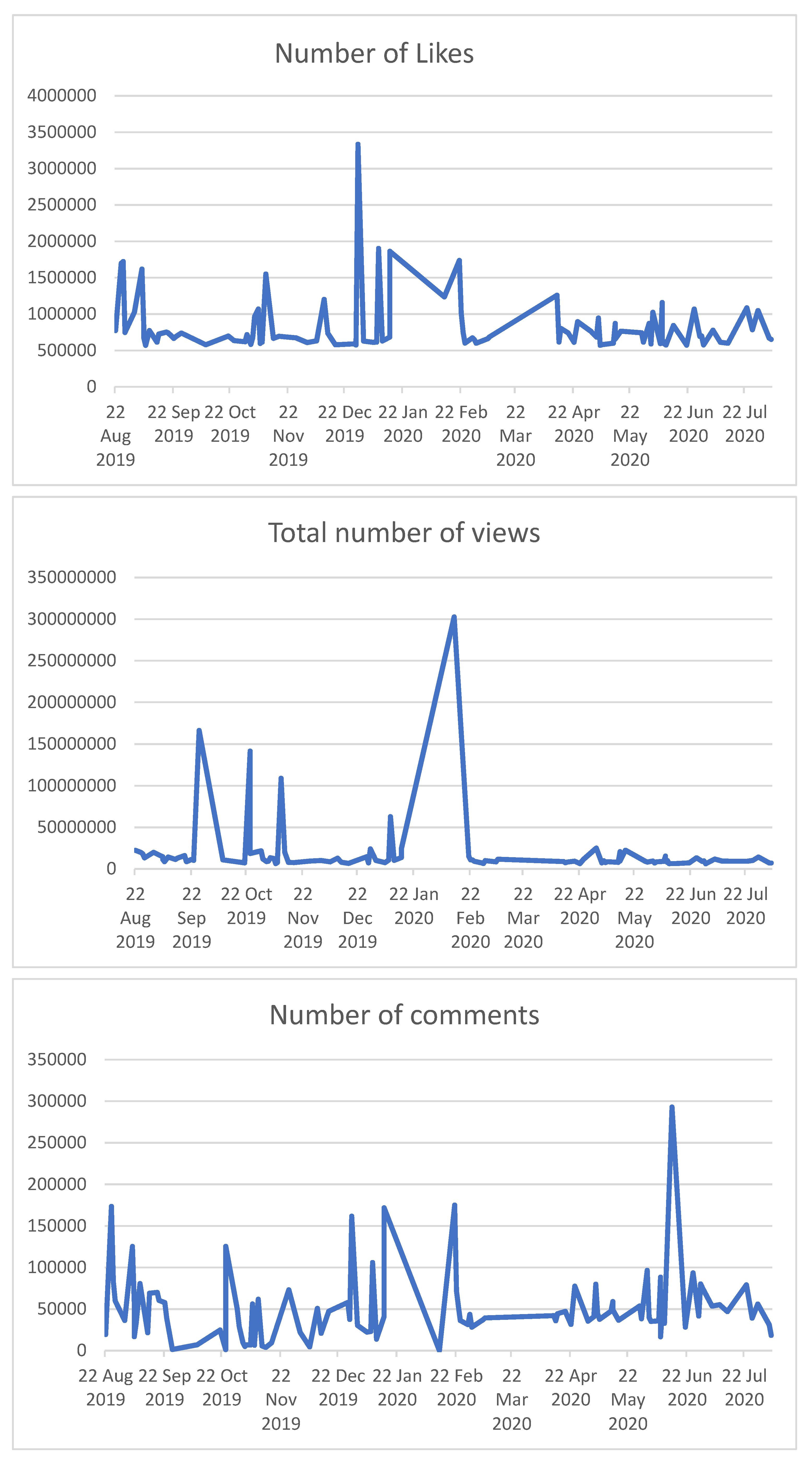
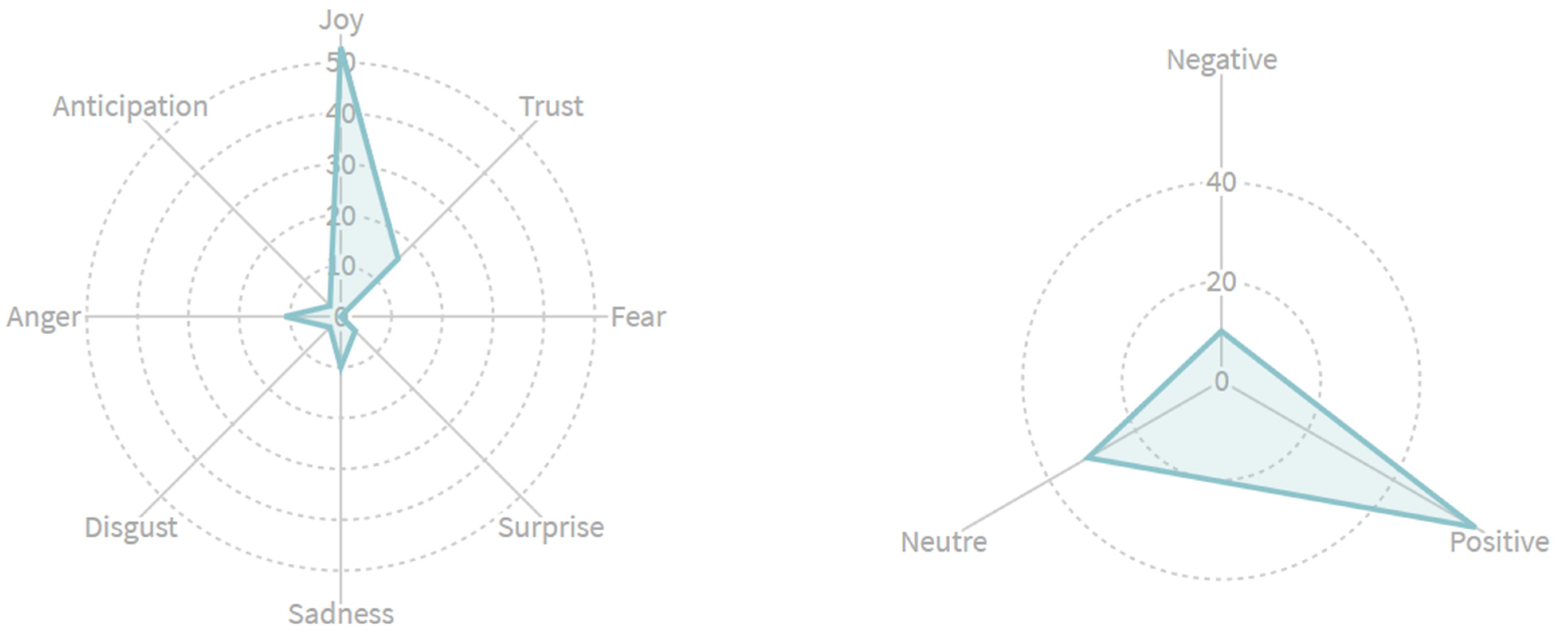

| Variable | Emotion | Emotion Level | Polarity | Agreement | Confidence Level | Irony | |
|---|---|---|---|---|---|---|---|
| 1. Emotion a | Pearson’s r | — | |||||
| p-value | — | ||||||
| 2.Emotion Level b | Pearson’s r | 0.453 | — | ||||
| p-value | <0.001 | — | |||||
| 3. Polarity c | Pearson’s r | 0.750 | 0.405 | — | |||
| p-value | <0.001 | <0.001 | — | ||||
| 4. Agreement d | Pearson’s r | 0.231 | 0.083 | 0.317 | — | ||
| p-value | 0.021 | 0.411 | 0.001 | — | |||
| 5. Confidence | Pearson’s r | −0.077 | −0.305 | −0.146 | −0.373 | — | |
| Level e | p-value | 0.447 | 0.002 | 0.148 | <0.001 | — | |
| 6. Irony f | Pearson’s r | 0.075 | 0.288 | 0.120 | 0.218 | −0.950 | — |
| p-value | 0.456 | 0.004 | 0.233 | 0.029 | <0.001 | — |
| Modelo | Unstandardized | Standard Error | Standardized | t | p | R2 | RMSE | F | p | |
|---|---|---|---|---|---|---|---|---|---|---|
| 1 | (Intercept) | −0.32 | 2.99 | −0.10 | 0.91 | 0.59 | 0.44 | 27.14 | <0.001 | |
| Emotion | 0.19 | 0.02 | 0.67 | 8.69 | <0.001 | |||||
| Emotion level | 0.00 | 0.00 | 0.08 | 1.04 | 0.29 | |||||
| Agreement | 0.72 | 0.40 | 0.15 | 1.78 | 0.07 | |||||
| Confidence level | −0.00 | 0.03 | −0.00 | −0.01 | 0.99 | |||||
| Irony | 0.01 | 0.35 | 0.01 | 0.04 | 0.96 | |||||
| 2 | (Intercept) | −0.35 | 0.31 | −1.12 | 0.26 | 0.59 | 0.44 | 34.29 | <0.001 | |
| Emotion | 0.19 | 0.02 | 0.67 | 8.91 | <0.001 | |||||
| Emotion level | 0.00 | 0.00 | 0.08 | 1.07 | 0.28 | |||||
| Agreement | 0.72 | 0.33 | 0.15 | 2.18 | 0.03 | |||||
| Irony | 0.01 | 0.10 | 0.01 | 0.17 | 0.86 | |||||
| 3 | (Intercept) | −0.35 | 0.31 | −1.13 | 0.25 | 0.59 | 0.43 | 46.18 | <0.001 | |
| Emotion | 0.19 | 0.02 | 0.67 | 9.00 | <0.001 | |||||
| Emotion level | 0.00 | 0.00 | 0.08 | 1.18 | 0.23 | |||||
| Agreement | 0.73 | 0.32 | 0.15 | 2.29 | 0.02 | |||||
| 4 | (Intercept) | −0.30 | 0.31 | −0.97 | 0.33 | 0.58 | 0.43 | 68.27 | <0.001 | |
| Emotion | 0.20 | 0.01 | 0.71 | 10.63 | <0.001 | |||||
| Agreement | 0.72 | 0.32 | 0.15 | 2.25 | 0.02 |
Publisher’s Note: MDPI stays neutral with regard to jurisdictional claims in published maps and institutional affiliations. |
© 2021 by the authors. Licensee MDPI, Basel, Switzerland. This article is an open access article distributed under the terms and conditions of the Creative Commons Attribution (CC BY) license (https://creativecommons.org/licenses/by/4.0/).
Share and Cite
Lozano-Blasco, R.; Latorre-Martínez, M.P.; Cortes-Pascual, A. Analizing Teens an Analysis from the Perspective of Gamers in Youtube. Sustainability 2021, 13, 11391. https://doi.org/10.3390/su132011391
Lozano-Blasco R, Latorre-Martínez MP, Cortes-Pascual A. Analizing Teens an Analysis from the Perspective of Gamers in Youtube. Sustainability. 2021; 13(20):11391. https://doi.org/10.3390/su132011391
Chicago/Turabian StyleLozano-Blasco, Raquel, Mᵃ Pilar Latorre-Martínez, and Alejandra Cortes-Pascual. 2021. "Analizing Teens an Analysis from the Perspective of Gamers in Youtube" Sustainability 13, no. 20: 11391. https://doi.org/10.3390/su132011391
APA StyleLozano-Blasco, R., Latorre-Martínez, M. P., & Cortes-Pascual, A. (2021). Analizing Teens an Analysis from the Perspective of Gamers in Youtube. Sustainability, 13(20), 11391. https://doi.org/10.3390/su132011391








